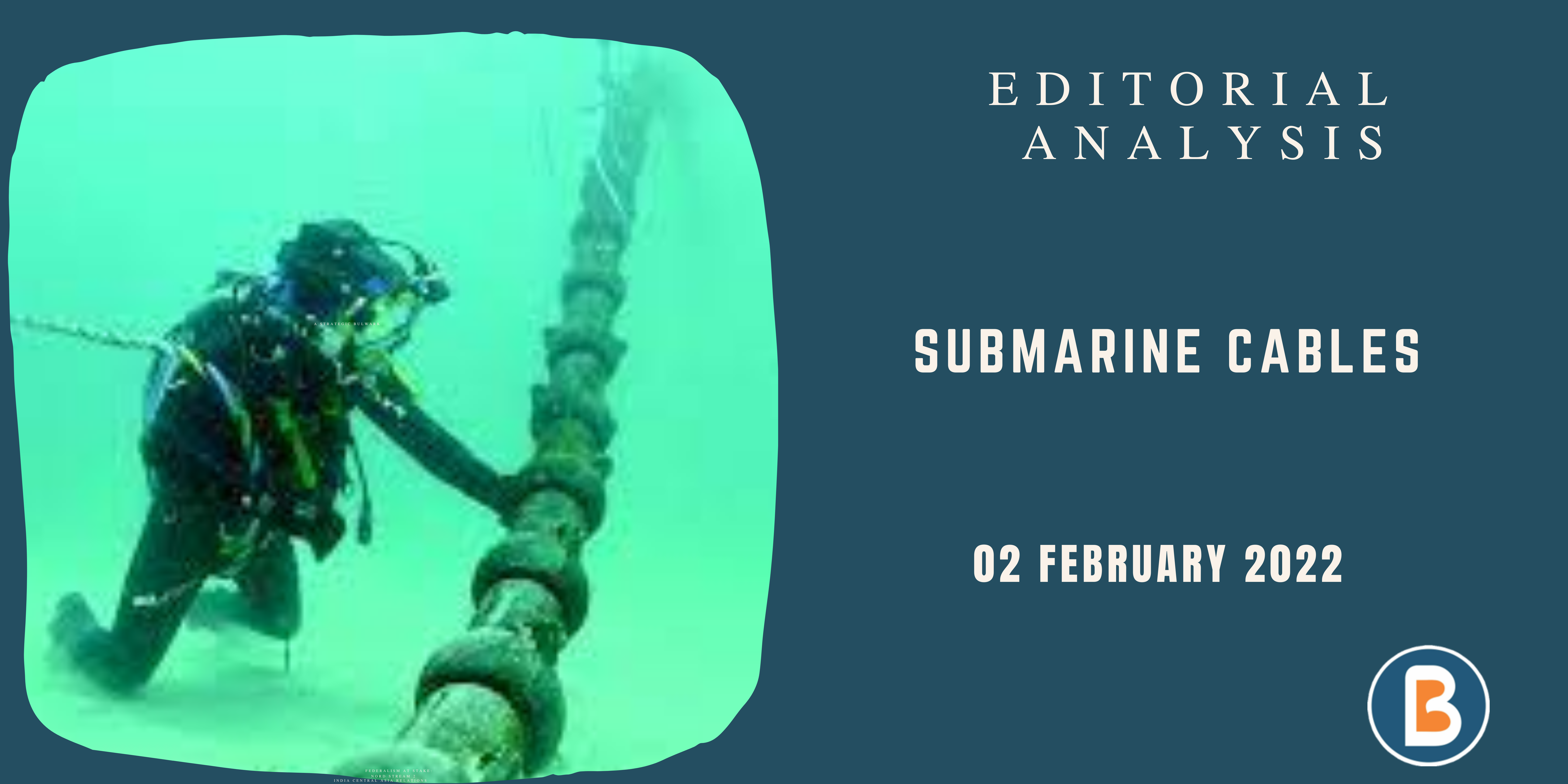Submarine Cables
Context:
- Tonga, an archipelago situated along the series of fault lines called the ‘Ring of Fire’ in the Pacific region, is quite prone to earthquakes and volcanic activities.
- On 15 January 2022, the Hunga Tonga–Hunga Ha’apai volcano, which is 65 kms north of Tonga, erupted underwater and led to a cascading tsunami that hit the main island, affecting around 1,00,000 people. Waves up to 4 feet, ash, and clouds of sulfur dioxide engulfed the region.
- This virulent volcanic eruption and one of its offset processes (tsunami, water currents, or underwater landslide) snapped the only 827-km-long optical fibre cable that connects Tonga with the rest of the world.
Background:
- The Tongan misfortune has cast light on the impact of natural disasters on the global communication systems, especially in the tiny and distant islands
- This is not the first time the Tongan cable has broken. A similar mishap happened in 2019 and it took around two weeks to repair the cable again
Significance:
- Submarine cables or underwater sea cables are optical fibre cables that are laid on the seabed using ships and connect landing ports.
- In these fibre-optic cables, data transmission happens through light waves being fired at rapid rates using a thick glass fibre between multiple transmitters, repeaters and receivers.
- The submarine cables have been in use for 150 years (although the transmission technologies have changed).
- The first commercial cable was laid in 1850 between England and France by the English Channel Submarine Telegraph Company followed by the laying of the first trans-Pacific cable in 1902 between mainland United States and Hawaii.
- Currently, there are around 436 submarine cables across the globe crisscrossing around 1.3 million km.
- The financial transactions amount to around US$ 10 trillion daily through these networks of cables.
- These cables are owned by consortium telecoms firms that manufacture, deploy and maintain submarine cables and can be state-owned, private or with joint rights. Major tech companies like Amazon, Google, Meta (previously Facebook) and Microsoft are active parties in these consortiums due to their reliance on the Internet and cloud computing.
Risks Posed:
- The major risks to undersea submarines are natural disasters and man-made activities that can be accidental or intentional.
- On an average, there are 100 cable faults every year and most accidents happen due to natural disasters, fish trawlers and ship anchors rather than terrorist attacks.
- There have been at least two instances of terrorist attacks on submarine cables: (1) in 2008, when terrorists cut off three undersea cables causing massive internet outage in Egypt; and (2) attack on Philippines cables in 2010.
- Instances of aquatic life damaging these cables are also quite rare and natural causes for such faults only account for 10 per cent of the total cases.
- Unintentional human mistakes due to ships and fishing vessels’ anchors cause two-thirds of all cable mishaps.
- The International Cable Protection Committee has issued guidelines and a manual to mitigate these human errors.
- Although these cables are of utmost significance for a major chunk of communication and connectivity, the positioning of these networks is highly unstable.
- The cables are laid at the shortest distance to save costs and are placed on routes that facilitate mobility, i.e., the “choke points” and narrow passages, for example, the Sundra Strait, Hawaiian Islands, Guam and the Suez Canal.
- Not only are these locations more prone to man-made accidents, but they are also active volcano zones that lead to earthquakes, underwater landslides and tsunamis causing damage to the undersea cables
Impact on India:
- India is connected to many submarine cables compared to Tonga’s one cable. The cables are clustered and connected to landing stations.
- India has five landing stations located at Mumbai, Cochin, Trivandrum, Tuticorin and Chennai, which provide connectivity to the entire nation.
- Further, Mumbai is connected to eleven cables, making it the busiest station, followed by Chennai with seven cables, Cochin with two, and Trivandrum and Tuticorin with one each.
- Hence, a situation like Tonga is very unlikely to happen to India unless we witness an extinction-level catastrophe.
Conclusion:
- Innovative approaches can be utilised to repair undersea cables instead of using ships that delay the process.
- Using Autonomous Underwater Vehicles is a faster, cheaper and safer way to fix the cables. In other words, submarine cables are indispensable.
Source: THE HINDU.




